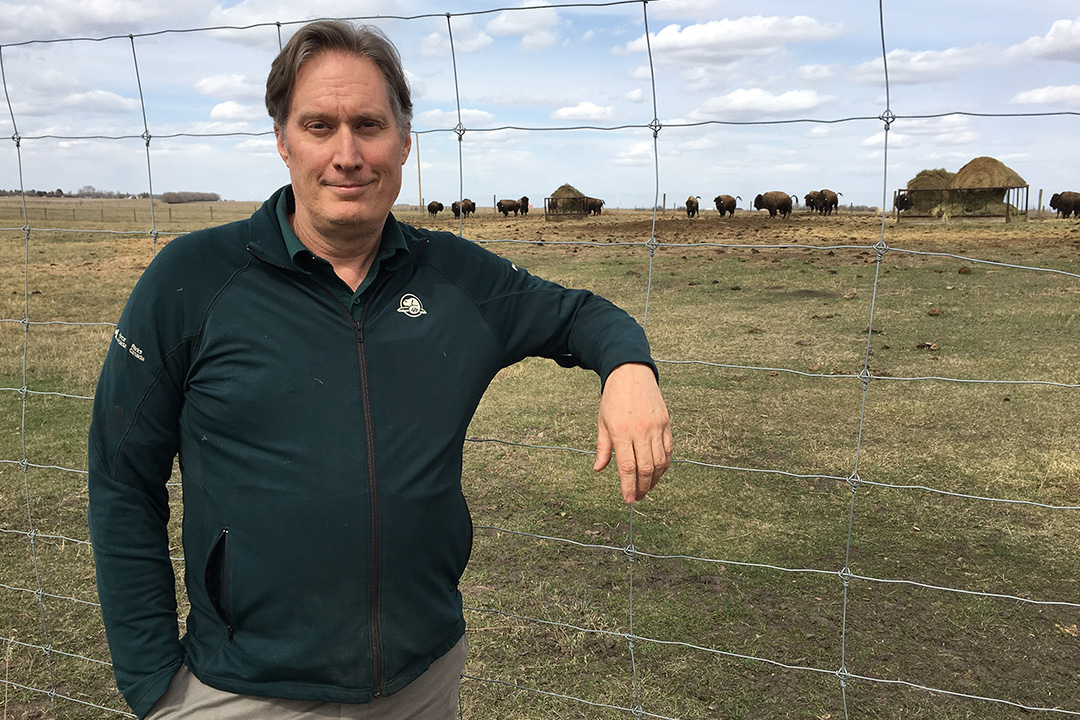
Veterinarian looking at ways to manage TB in northern bison herd
A Parks Canada scientist is conducting research on bovine tuberculosis in bison to improve diagnosis of the disease and to develop better vaccines. This research is conducted in collaboration with the University of Saskatchewan and the Canadian Bison Association.
By Lana Haight“It’s a difficult issue because there are no easy answers and there are no easy fixes,” says Dr. Todd Shury (PhD), a national wildlife health advisor in the Office of the Chief Ecosystem Scientist with Parks Canada. Shury is also an adjunct professor in the Western College of Veterinary Medicine at the University of Saskatchewan.
It’s an issue that needs to be addressed for the conservation of wild bison herds and to protect the cattle and commercial bison industries. Canada is considered officially free from bovine tuberculosis and a TB-control program for cattle has been in place since 1924.
“We’ve worked hard to achieve that status. The bison in northern Canada are the last remaining wildlife reservoir of TB in Canada,” says Shury.
Straddling the Alberta-Northwest Territories border, Wood Buffalo National Park, is home to bison herds that include TB-infected animals. Studies have shown that between 21 and 49 per cent of the animals could be diseased and it’s believed that the herds have been infected for almost 100 years.
To do nothing could jeopardize Canada’s status as being free from bovine tuberculosis, says Shury. The disease could spread to nearby disease-free bison herds and to cattle ranches in the area.
Bovine tuberculosis (Mycobacterium bovis) affects a wide range of mammals. It shares 99.95 per cent of the same genetics found in the type of TB that affects humans (Mycobacterium tuberculosis), but there are subtle differences between the two. There are no known cases in Canada of a person being infected with bovine TB from bison, although M. bovis is a significant human pathogen elsewhere in the world.
This type of TB research is not new to Shury, who graduated from the WCVM in 1993 and completed a PhD in large animal clinical sciences in 2015.
In the early 2000s while working on his PhD program, Shury was involved in a project to eradicate TB among elk and deer in Riding Mountain National Park in southwestern Manitoba. Working with the Manitoba government and the Canadian Food Inspection Agency, the team tested elk and deer for TB, removed infected animals and reduced the density of the elk herd.
“We’ve had some pretty amazing success in managing the disease in the elk herd in Riding Mountain. We think that elk herd is free of TB. We’d like to apply what we learned with bison herds in the North. We don’t have the tools right now. This project will hopefully help us develop the tools to do that.”
In March, 24 bred female Plains bison and one male Plains bison from Elk Island National Park arrived at the Livestock and Forage Centre of Excellence’s Goodale Farm, located southeast of Saskatoon, for a two-year study.
The first part of Shury’s research will involve this spring’s bison calves. When they reach six months of age, the animals will be moved to the Vaccine and Infectious Disease Organization-International Vaccine Centre (VIDO-InterVac) — a containment level 3 facility for biosafety on the University of Saskatchewan campus. The animals will be experimentally infected with the strain of bovine TB found in the Wood Buffalo National Park herds.
For two months, Shury and his team will observe the animals, watching for lesions of tuberculosis. The scientists will take regular blood samples, testing them for TB using four or five diagnostic tests that work for cattle but haven’t been used in bison. They want to determine which test is most reliable in detecting TB in the blood at the earliest stage.
Next spring’s calves will be involved in the second part of the research. Those animals will also be moved to VIDO-InterVac where they will be vaccinated and then infected with bovine TB. The researchers will use two vaccines that have proven effective with cattle and other species, and they will study the animals’ immune response to determine which vaccine is most effective.
Shury hopes that this preliminary, lab-based research will guide the field work that needs to be done in Wood Buffalo National Park to better manage or eliminate TB in the park’s bison herds.
“A vaccine would help us potentially manage the problem with diseased bison in northern Canada in and around Wood Buffalo National Park,” says Shury. “We’ve got very few options when it comes to managing that disease right now. If we had better diagnostic tests, we could better manage infected animals and reduce the prevalence over time.”
Parks Canada and the Canadian Bison Association are funding this research.

